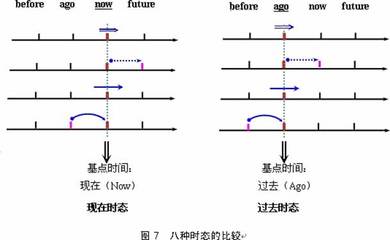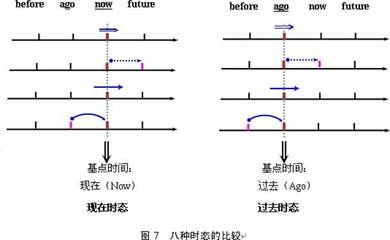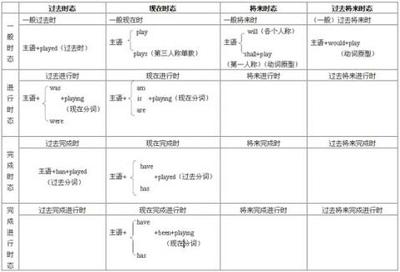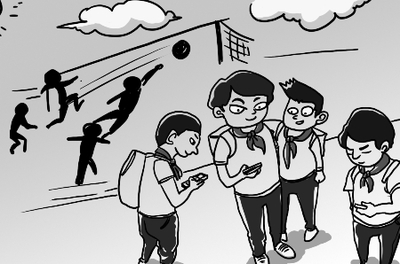定义:表示在过去某一时间或动作之前已经发生或完成了的动作或状态。它表示句子中描述的动作发生在“过去的过去”。
基本结构:主语+had+过去分词(done) /主语+hadbeen+过去分词(done)
语法判定:
1. 由时间状语来判定
一般说来,各种时态都有特定的时间状语。常与过去完成时连用的时间状语有:
( 1 ) by + 过去的时间点。如:
I had finished reading the novel by nine o'clock lastnight.
( 2 ) by the end of + 过去的时间点。如:
We had learned over two thousand English words by the end oflast term.
( 3 ) before + 过去的时间点。如:
They had planted six hundred trees before last Wednesday.
2. 由“过去的过去”来判定。
过去完成时表示“过去的过去”,是指过去某一动作之前已经发生或完成的动作,即动作有先后关系,动作在前的用过去完成时,在后的用一般过去时。这种用法常出现在:
( 1 )宾语从句中
当宾语从句的主句为一般过去时,且从句的动作先于主句的动作时,从句要用过去完成时。在told, said, knew,heard, thought等动词后的宾语从句。如:
She said that she had seen the film before.
( 2 )状语从句中
在时间、条件、原因、方式等状语从句中,主、从句的动作发生有先后关系,动作在前的,要用过去完成时,动作在后的要用一般过去时。如:
After he had finished his homework, he went to bed.
注意: 有些before, after引导的时间状语从句中,若主、从句表示的动作紧密相连,时间先后不明显,则主、从句都用一般过去时。如:
After he closed the door, he left the classroom.
(3)表示意向的动词,如hope, wish, expect, think, intend, mean,suppose等,用过去完成时表示“原本…,(结果未能…)”
We had hoped that you would come, but you didn't.
3.固定句型:
过去完成时还可用在hardly…when…, no sooner…than…, It was the first (second,etc) time (that)…等固定句型中。
Hardly had he begun to speak when theaudience interrupted him.
他刚开始演讲,听众就打断了他。
No sooner had he arrived than he went away again.
他刚到就又走了。
It was the third time that he had been out of work thatyear.
这是他那一年第三次失业了。
4. 根据上、下文来判定。
I met Wang Tao in the street yesterday. We hadn't seen eachfor many years.
***过去完成时与一般过去时的区别:
虽然这两种时态都表示过去发生的动作或存在的状态,但在使用时应注意以下几点:
1. 时间状语不同:过去完成时在时间上强调“过去的过去”;而一般过去时只强调过去某一特定的时间。
比较:They had arrived at the station by ten yesterday.
They arrived at the station at ten yesterday.
2.在没有明确的过去时间状语作标志时,谓语动词动作发生的时间先后须依据上下文来判断:先发生的用过去完成时,后发生的则用一般过去时。
She was very happy. Her whole family were pleased with her,too. She had just won the first in the composition competitio n.
3. 当两个或两个以上接连发生的动作用 and 或 but 连接时,按时间顺序,只需用一般过去时来代替过去完成时;另外,在before , after , as soon as引导的从句中,由于这些连词本身已经表示出时间的先后,因此也可以用过去时来代替过去完成时。
He entered the room, turned on the light and read an eveningpaper.
 爱华网
爱华网



